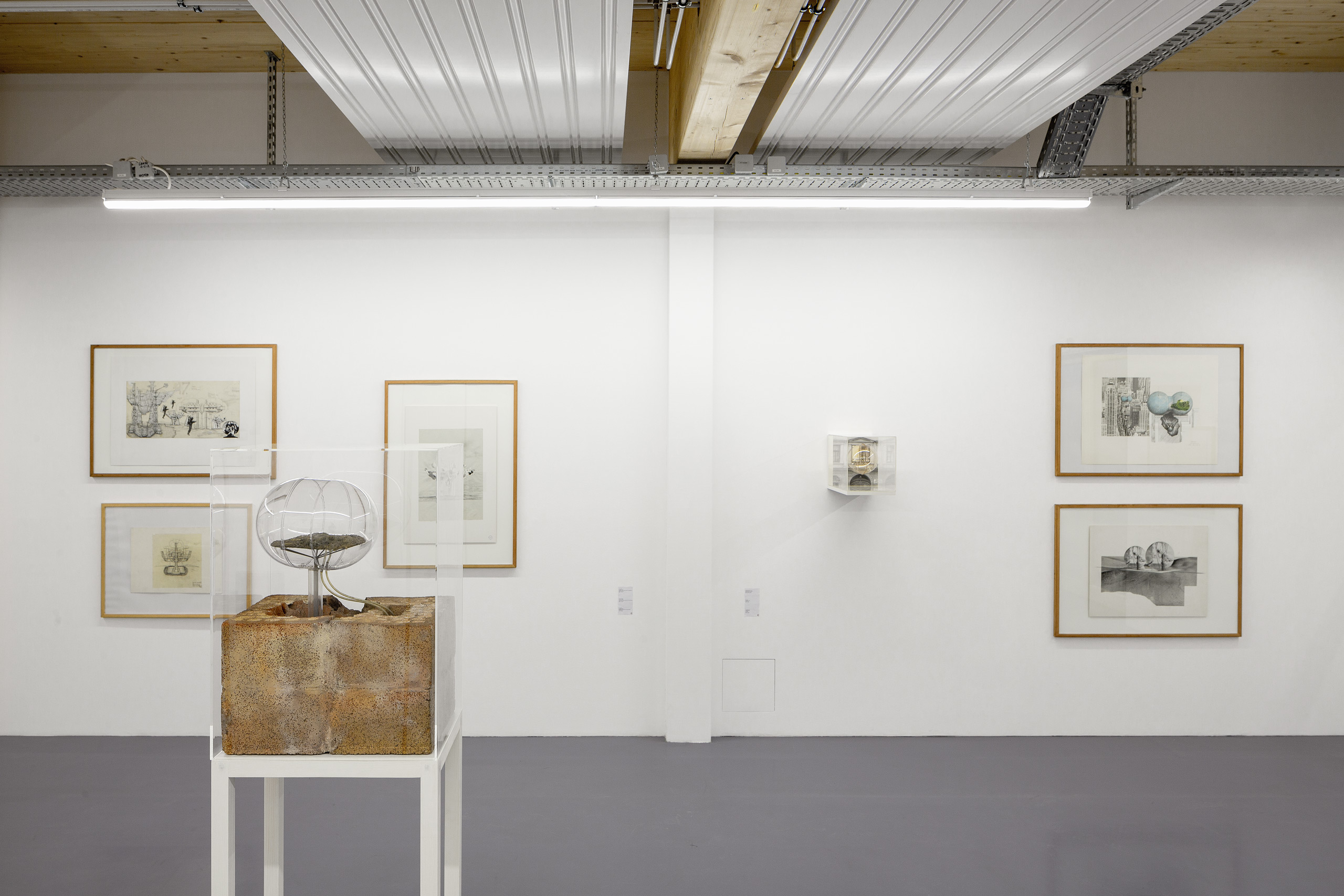Haus-Rucker-Co
- Stadt von Morgen
19.1. – 8.2.2020










Haus-Rucker-Co – Stadt von Morgen
von Boris Hars-Tschachotin
The late 1960s was a time of upheaval and transition. Anything seemed possible, especially in art, whose protagonists often saw themselves as the initiators of social change. The wild joy of experimentation, of political provocation and the firm conviction of being able to influence society with strong creative innovations resulted in a wealth of sensational thrusts in art, some of which still have a lasting impact to this day.
One of these powerful sources of inspiration was Haus-Rucker-Co, a group of artists that formed in Vienna in 1967 and called for a radically new approach to architecture. The founding members Laurids Ortner, Günter Zamp Kelp and Klaus Pinter were joined by Manfred Ortner in 1971. The name of the group referred on the one hand to its origin, the Upper Austrian region of Hausruck, and on the other hand to the programmatic objectives of the young architects and artists. They wanted to give the classic buildings a good push to make room for new, urban spaces and ideas. They saw themselves as “Haus-Verrücker”, in short: Haus-Rucker, and moved eloquently and with enormous media impact between architecture and art.
They worked with great playfulness on the perception of the individual on a visual-auditive as well as on a spatial level. Be it with the multiform objects, which can be summarized under the term “mind expander”, or the pneumatically compressed architectures made of plastic foil and steel.
By using the devices, such as the “Environment Transformer” (1969), the recipients were to experience a fundamental intensification of their visual perception of the world, which was usually accompanied by a marked alienation. “The aim was to obtain the juice for rapid and total expansion of one's own consciousness directly from the images of the environment, cold-mechanically, in contrast to the hot chemistry of drugs.”
The science fiction-like urban designs of Haus-Rucker-Co protruded as transparent bubbles from the windows of existing buildings. In airy heights, PVC spheres floated like fragile diving-bells from the stone architectures and offered the occupants quite surprising, new views of traditional urban spaces. “Architecture as a benevolent transformer, capable of directly influencing the consciousness of its users.” These mind-expanding, earthly living concepts were also a response to the technophile Space Age with its landing attempts on the moon. Seemingly free of gravity, the temporary experience architectures such as the “Ballon für Zwei” (“Balloon for Two”) or the “Gelbes Herz” (“Yellow Heart”) opened up carefree reflections on the clever reform of urban spaces in the round design of soft PVC worlds, often covered with bright pop colours. Haus-Rucker-Co were not alone with their groundbreaking architectural visions. Since the 1940s, avant-gardist Richard Buckminster Fuller had already been working with multifaceted cathedral structures or the so-called Fuller domes. There were parallels to the Archigram group in England as well as to their colleagues Coop Himmelb(l)au in Vienna.
At the beginning of the seventies, Haus-Rucker-Co’s colourful, light-hearted experimentation turned critical. With rampant environmental destruction on the one hand and the relentless nuclear arms race on the other, the optimistic lightness of the work was transformed into a life-sustaining urgency, in which the bubbles and large-scale envelopes were supposed to save people from perishing. In a 1971 text by Haus-Rucker-Co, a visionary and pessimistic statement was made: “Cities are buried under smog blankets. [...] The streets have turned into gas chambers, the rivers into viscous poisonous broths. ...wandering mountains of garbage eat grass and trees. Not a science fiction story. This is the planet Earth.” A decade later, Ridley Scott creates a cinematic counterpart to the nightmare described by Haus-Rucker-Co with Blade Runner, in which he conjures up a contaminated and inescapable megalopolis Hades. Scott’s dystopia, released in 1982, reaches 37 years ahead and is set in Los Angeles in 2019. Haus-Rucker-Co had already envisioned the city of tomorrow in 1971 with their legendary exhibition “Cover -- Überleben in schmutzer Umwelt” (“Cover -- Surviving in a Polluted Environment”) and presented a “Life in Synthetic Reserves” through a fictional leap in time into the future. A giant bubble of light-coloured plastic film spanned the Krefeld Museum Haus Lange and the adjacent garden. The installation invited visitors to visit this abysmal Noah’s Ark and develop an awareness of what it means to survive in a planet destroyed by environmental pollution.
The drawings, collages, models, and photographic and film documents shown in the exhibition cast a spotlight on the city of tomorrow by showing both the mind-expanding objects and pneumatic architectures, and the reserves in the form of domes or spheres. The latter critically question our relationship to natural and urban spaces, in which artificial cultural and natural landscapes are brought together and intertwined. In times of global climate catastrophe and the search for survival strategies, Haus-Rucker-Co’s visionary considerations with regard to the city of tomorrow have lost none of their topicality and have thus remained a decisive source of inspiration for a multitude of current artistic positions worldwide, as can be seen for example in the works of Olafur Eliasson, Tomás Saraceno or the group Raumlabor Berlin.
---
1 HRC Band 1, S.13
2 HRC Band 1, S.12
3 Bogner 1992, 57, Haus-Rucker-Co
